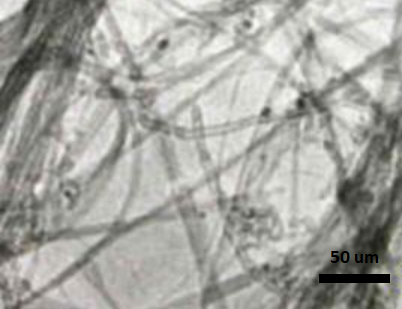(-COOH) Functionalized Single Walled Carbon Nanotubes, Purity: > 65%
- SKU:
- NG01SW0303
- Shipping:
- Calculated at Checkout
Description
5 grams/95 €
25 grams/445 €
100 grams/1280 €
500 grams/4940 €
1000 grams/8780 €
Please contact us for quotes on larger quantities !!!
(-COOH) Functionalized Single Walled Carbon Nanotubes
Purity: > 65%, SSA: 400 m2/g, Dia: 1.0 nm
Single walled carbon nanotubes (SWCNTs, SWNTs) comprise of one-atom-thick sheets of graphene that rolled up to
form long hollow tubes. SWCNTs possess exceptional thermal, mechanical and electrical properties. These remarkable
properties lead to advances in performance in a wide range of materials and devices. Single-walled carbon nanotubes
are actively used in diverse area including energy storage, molecular electronics, nano mechanial devices, composites
and bio-sensing. You can buy (-COOH) Functionalized Single Walled Carbon Nano Tubes with low prices and high purity.
Technical Properties:
| Purity | > 65 % |
| Content of (-COOH) | 2.7% |
| Color | black |
| Average Diameter | 1.0 nm |
| Length | 5-35 µm |
| OD | 1-2 nm |
| ID | 0.8-1.6 nm |
| Tap Density | 0.15 g/cm3 |
| True Density | 2.2 g/cm3 |
| SSA | 400 m2/g |
| Ash | 3.0 wt% |
| Thermal Conductivity | 45-190 W/m.K |
| Electrical Conductivity | 98 S/cm |
| Manufacturing Method | CVD |
| CAS No | 308068-56-6 |
SEM Image

Applications:
- Biomedical & Biosensing: Carboxyl groups enable covalent bonding with biomolecules, making these SWCNTs ideal for biosensors, drug delivery, and bioimaging. Their improved aqueous dispersibility supports stable formulations for life science applications.
- Catalysis & Surface Engineering: The -COOH functionality enhances interaction with metal ions and catalytic species, improving performance in heterogeneous catalysis, photocatalysis, and template-assisted synthesis.
- Polymer & Composite Systems: Functionalized SWCNTs disperse efficiently in polar solvents and polymer matrices, boosting mechanical reinforcement, thermal conductivity, and electrical performance in advanced composites.
- Energy Storage & Conversion: Their tailored surface chemistry improves electrode–electrolyte interface behavior in supercapacitors, lithium-ion batteries, and fuel cells, supporting higher charge transfer and cycle stability.






